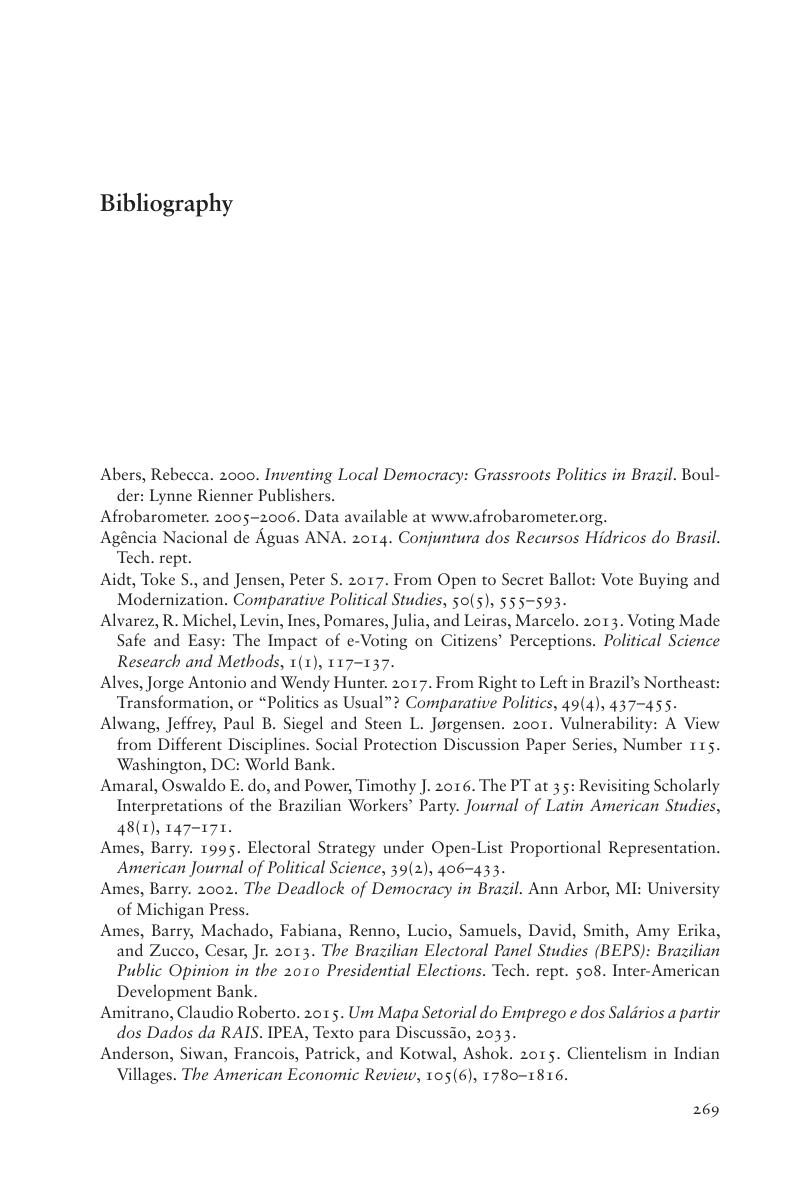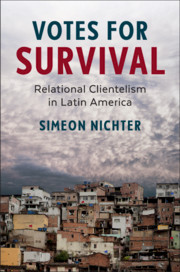Book contents
- Frontmatter
- Dedication
- Contents
- List of Figures
- List of Tables
- Acknowledgments
- 1 Introduction
- Part I Electoral Clientelism
- Part II Relational Clientelism
- Part III Extensions
- Appendix A Description of Qualitative Fieldwork
- Appendix B Description of Surveys
- Appendix C Signaling Model of Declared Support
- Appendix D Regression Tables for Declared Support
- Appendix E Regression Tables for Requesting Benefits
- Appendix F Regression Tables for Comparative Chapter
- Bibliography
- Author Index
- Subject Index
- Cambridge Studies in Comparative Politics
- References
Bibliography
Published online by Cambridge University Press: 06 December 2018
- Frontmatter
- Dedication
- Contents
- List of Figures
- List of Tables
- Acknowledgments
- 1 Introduction
- Part I Electoral Clientelism
- Part II Relational Clientelism
- Part III Extensions
- Appendix A Description of Qualitative Fieldwork
- Appendix B Description of Surveys
- Appendix C Signaling Model of Declared Support
- Appendix D Regression Tables for Declared Support
- Appendix E Regression Tables for Requesting Benefits
- Appendix F Regression Tables for Comparative Chapter
- Bibliography
- Author Index
- Subject Index
- Cambridge Studies in Comparative Politics
- References
Summary

- Type
- Chapter
- Information
- Votes for SurvivalRelational Clientelism in Latin America, pp. 269 - 286Publisher: Cambridge University PressPrint publication year: 2018



